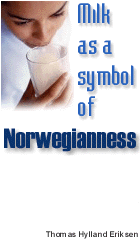|
|
 The economy
The economy
|
 Resources and industry Resources and industry
The Norwegian economy is dependent largely on the fortunes of its important petroleum industry. Thus, it experienced a decline in the late 1980s as oil prices fell but by the late 1990s had rebounded strongly, benefiting from increased production and higher prices. Norway reversed its negative balance of payments, and the growth of its gross national product (GNP)—which had slowed during the 1980s—accelerated. By the late 1990s Norway's per capita GNP was the highest in Scandinavia and among the highest in the world. In an effort to reduce economic downturns caused by drops in oil prices, the government in 1990 established the Government Petroleum Fund, into which budget surpluses were deposited for investment overseas.
Only about one-fifth of Norway's commodity imports are food and consumer goods; the rest consists of raw materials, fuels, and capital goods. The rate of reinvestment has been high in Norway for a number of years. This is reflected in the relatively steady employment in the building and construction industry. Rapid growth, however, has been registered in commercial and service occupations, as is the case in most countries with a high standard of living. By the late 1990s more than two-thirds of actively employed Norwegians worked in services, while about one-sixth worked in industry (including manufacturing, mining, and petroleum-related activities). Although the construction sector employed less than one-tenth of the active workforce, its total exceeded that of agriculture and fishing, which comprised a shrinking proportion. Unemployment generally was below 6 percent.
Fewer than 5 percent of the industrial companies in Norway have more than 100 employees. Nonetheless, they account for half of the industrial labour force and for more than half of production. The smaller companies are usually family-owned, whereas most of the larger ones are joint-stock companies. Foreign interests control companies accounting for about 10 percent of total production. Only a few larger concerns are state-owned, and even these are usually run with almost complete independence.
Agriculture and fishing are highly organized, and they are subsidized by the state. In remote districts private industry may receive special incentives in the form of loans and grants or tax relief. Taxes are high, with sharply progressive income taxes and a value-added (or consumption) tax of 23 percent on all economic activity. Total tax revenues are equivalent to about half of the GNP, but much of this represents transfers of income; i.e., it is returned to the private sector in the form of price subsidies, social insurance benefits, and the like. All this has added to economic problems of inflation, but increases in productivity have made possible a high rate of growth in real income. The strongly centralized trade unions and employer associations respect one another as well as government guidelines, thus helping to control the rapidly expanding economy. Foreign trade, in the form of commodities exported chiefly to western Europe or shipping services throughout the world, accounts for nearly half of Norway's national income.
|
 |
|
Anons |

|
| Links |


|
|


 Resources and industry
Resources and industry